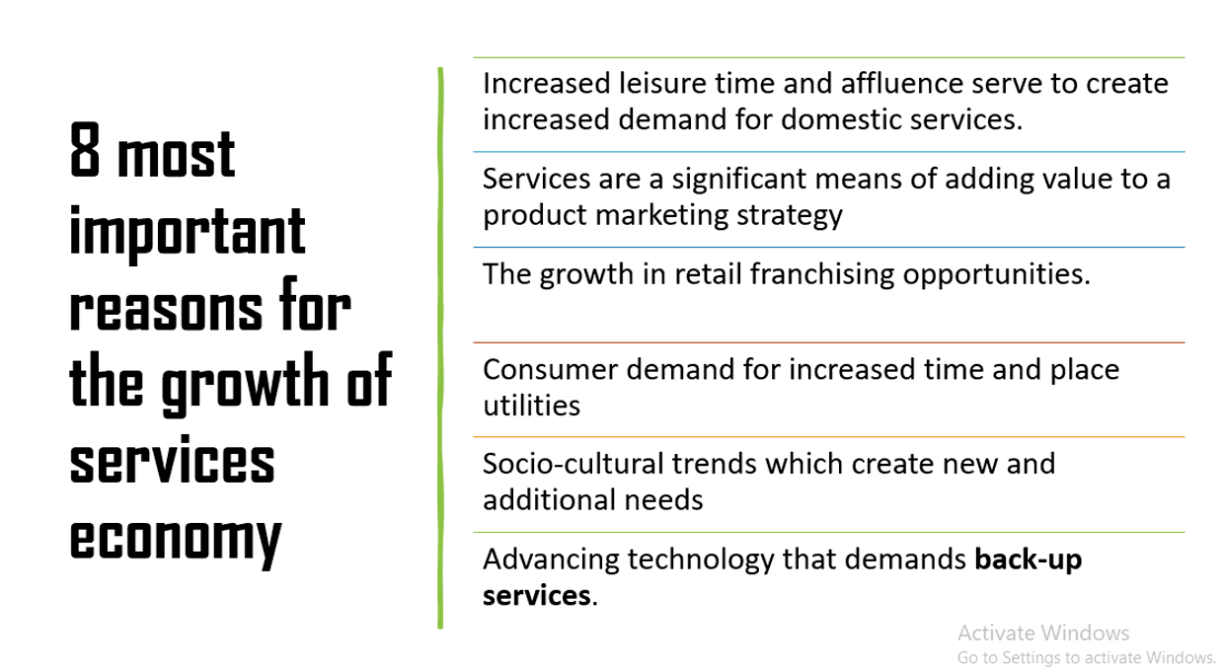Following points that can be made for services economy growth include:
- Increased leisure time and affluence serve to create increased demand for domestic services.
- g. recreation and entertainment, tourism, and hospitality services.
- Services are a significant means of adding value to a product marketing strategy, gaining, and maintaining competitive advantages, and securing key account relationships.
- The growth in retail franchising opportunities.
- Consumer demand for increased time and place utilities
- (e.g. Banking services provided in supermarkets; in-home shopping; car-wash services that come to you; door-to-door courier and delivery services; laundry and dry-cleaning pick-up and delivery services)
- Socio-cultural trends which create new and additional needs
- (e.g. personal trainers, health and fitness advice and programs; a desire to return to “school” on the part of mature age people; in-home catering and entertainment services).
- Advancing technology that demands back-up services.
- The increasing recognition of the value of marketing in what were previously non-marketing-oriented organizations
- (e.g. charities and non-profit organization; sports clubs; arts organizations; the public service sector).
- In business, the need for specialist skills and expertise, coupled with recent downsizing in middle-management, has meant that more and more organizations are out-sourcing or contracting professional and other commercial services
(e.g. research and strategic planning; data processing; travel and accommodation planning; catering and conference planning; recruitment; payroll administration; staff training and development).
Q: What role does physical evidence play in a service organization? Distinguish between the perspectives of management and customers.
A: Physical evidence plays a multiple role in service organizations. Facilities, furniture, and furnishings serve a functional purpose for employees and customers alike, yet also serve to create an image and impression of the service organization.
This ‘servicescape’, and the ambience thereby created, can be a powerful means of providing customers with a sense of comfort, confidence and reassurance, and of reducing customers’ sense of risk or anxiety.
Physical evidence needs to be designed from both management and customer perspectives, but in a way that both are reconciled. This is to say that both have differing physical, functional and aesthetic requirements that need to be satisfied so that the service organization and its employees can operate smoothly and effectively, and so that customers feel comfortable.

